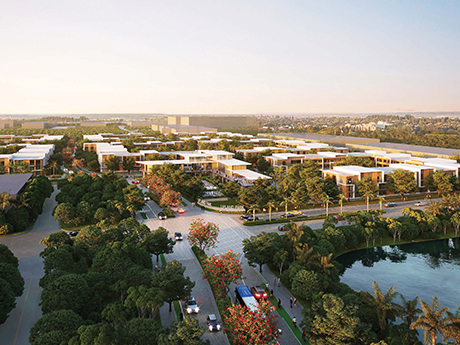South Florida remains one of the most attractive markets for multifamily investment in the United States, driven by population growth, job creation and limited rental supply. While 2024 saw slower transaction volumes, fundamentals suggest a rebound is coming in 2025.
This article explores trends in investment sales, debt capital markets and joint venture (JV) equity, highlighting how strategic structuring and strong relationships are driving activity in today’s selective capital environment.
Poised for sales growth
Miami’s multifamily market continues to thrive, fueled by population growth, high rental demand and major developments. The city’s job market, with an unemployment rate of just 2.4 percent, is expected to grow by over 18,000 positions in 2025. Corporate expansions — like Citadel, MSC Group, Nvidia, Microsoft and Shopify — have driven demand for luxury rentals, while vacancy rates remain under 5 percent.

With home prices rising over 70 percent in the past five years and mortgage rates more than doubling, homeownership is out of reach for many. As a result, demand for luxury rentals remains strong, especially in suburban areas where transit-oriented developments are emerging.
One standout is Terra’s $1 billion Upland Park in West Miami-Dade County. In partnership with the county, the project includes more than 2,000 units, 282,000 square feet of retail space and 414,000 square feet of commercial space. The first 578 units will deliver in 2026, helping address local housing needs.
Still, investment sales volume has been muted. In 2024, multifamily asset sales over 100 units in Miami-Dade County totaled $800 million across seven deals — down from $1 billion in 2023 and $3.8 billion in 2022. The slowdown is tied to higher insurance costs, elevated cap rates and wide bid-ask spreads. However, with insurance costs down 10 to 20 percent and rate stability improving, transaction velocity is expected to return.

Concerns about oversupply are largely isolated. In Brickell, for example, most of the recent residential construction has been for-sale condominium product. The last multifamily rental delivered was Solitaire in 2019. Projects that can secure capital today are positioned to deliver into an undersupplied market with strong demand.
Selective capital markets
Higher interest rates and tighter regulation have reshaped lending, but South Florida remains a top destination for capital. Debt is still available for stabilized, cash-flowing assets — particularly from life insurance companies and the agencies (Fannie Mae and Freddie Mac), which remain competitive. Strong interest also exists for construction loans, provided projects are well-located and sponsorship is strong.
Local banks have taken a more cautious stance. Pressured by regulators and challenging loans on their balance sheets, they’re focusing on lower-risk deals and reserving construction loans for long-time clients. Relationship-driven banking is more important than ever, with banks offering broader services beyond lending.
With banks retreating from senior leverage in construction, debt funds have stepped in with creative structures like A/B notes, mortgage + mezz and note-on-note financing. This has helped fill gaps but resulted in lower leverage and higher borrowing costs.
Preferred equity has become a crucial part of the capital stack. Significant capital has been raised to provide equity-like returns in a safer position, targeting development, bridge and stabilized deals with equity gaps. With mid-teen return targets, preferred equity is often replacing JV equity.
For two years, the market has anticipated a wave of distress due to refinancing challenges. Yet, lenders have largely extended or modified loans, limiting forced sales. Meanwhile, investor demand for distressed deals has surged — bidding up note sales and recapitalizations. This liquidity has helped prop up property values, creating a higher floor and making true distress harder to find.
JV equity in development
JV equity for ground-up multifamily development remains difficult to source. Construction costs, elevated debt costs and uncertainty around exit cap rates have made underwriting challenging. Most high-rise projects struggle to exceed a 6 percent untrended return-on-cost. Even assuming a 4.5 percent to 5 percent exit cap, the development spread is too tight. When core assets can be acquired at a 5 percent cap, the risk/reward profile for new development is less appealing.
As a result, traditional limited partners (LPs), including insurance companies, sovereign wealth funds, family offices and private equity, are sitting on the sidelines. Many are choosing preferred equity instead, earning similar returns with less risk. Unless costs fall or exit assumptions improve, this dynamic is likely to persist.
There are exceptions. Some developers in high-barrier areas like Coral Gables and Coconut Grove have secured equity for boutique or ESG-driven projects. But these remain the exception, not the rule.
Heading into 2025, the question remains: what needs to shift to bring institutional LPs back into ground-up equity positions?
A market for all participants
Despite headwinds, South Florida continues to offer compelling multifamily opportunities. Owners are holding high-performing assets, investors are eyeing core deals, lenders remain active and flexible capital providers are deploying funds.
With strong population and job growth, limited supply in key submarkets and persistent rental demand, South Florida remains one of the best-positioned regions in the country for multifamily investment in 2025 and beyond.
— By Daniel Matz, senior managing director, and Jackson Huggett, director of Newmark’s Multifamily Capital Markets Group. This article was originally published in the May 2025 issue of Southeast Real Estate Business.


